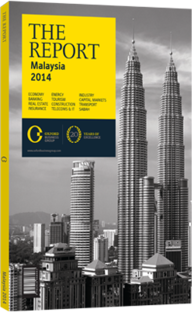Curbed lending: Mixed reaction to rising debt levels
Pressure is mounting on Malaysia’s central bank to tighten loan restrictions after its annual report showed household debt levels inching towards 87% of GDP at the end of 2013. With the highest household debt levels in Asia, demand for credit is driven primarily by the purchase of property and vehicles.
Keen to allay concerns, the central bank recently highlighted Malaysia’s strong fundamentals, while also pointing to measures introduced in 2013 which, it said, had improved lending practices. Senior analysts have given Malaysia’s economy a vote of confidence, although concern is growing that a future talent shortage could weigh on the bank’s financial projections.
Vetting Brings Improvements
Household debt levels hit 86.8% of GDP at the end of 2013, a record high signalling slower growth ahead. Bank Negara Malaysia’s governor Zeti Akhtar Aziz voiced her confidence that efforts to tighten lending were producing results. “Household loans from the banking system continued to improve in quality across all loan segments, with delinquencies remaining low and continuing to trend downwards… This has been supported by sustained improvements in the lending and risk management practices of banks,” she told the press.
The central bank limited the tenure of personal loans to 10 years in July 2013, while also banning pre-approved personal financing products. Later in 2013 the government announced plans to bring an end to the practice of developers absorbing interest payments on loans. It also raised capital gains tax to 30% on homes sold within five years to rein in speculation.
Conflicting Sentiment
Despite these efforts, Standard & Poor’s (S&P) cut its credit outlook for four lenders in November 2013, citing concerns that rising home prices and household debt were contributing to imbalances. “The negative outlook recognises the potential for deterioration in the banks’ asset quality and financial profile, if the consumer debt burden proves excessive in an unfavourable economic scenario,” S&P analysts Ivan Tan and Deepali V Seth wrote in a report.
Official data from the Malaysia Department of Insolvency issued in the same month showed that 60 people, aged between 35 and 44, were being declared bankrupt each day. Yet optimism remains about the Malaysian economy’s potential.
“We are likely to see a slowdown in lending for the industry next year; however, we still believe that loan demand is still there,” said Tan Kong Khoon, group managing director and CEO of Hong Leong Bank. Projections made by market analysis firms support this view. RHB Research said in March that Malaysia’s GDP looked likely to grow at 5.4% in 2014.
Supporting Transformation
Kuala Lumpur has set a target of achieving a per capita income of $15,000 by 2020, up from its 2013 level of $10,500, as part of its Economic Transformation Programme. Prime Minister Najib Razak said in early January 2014 that the government was looking to create more than 3m job opportunities by the same year, in line with its target of achieving high-income, developed nation status.
Critics, however, warn that positive income and job creation predictions depend heavily on having the people in place to fill those roles. Malaysian students ranked 52nd out of 65 countries featured in the PISA 2012 survey of world student performance, released in December 2013 and the most recent available.
Writing in the FTA dviser on March 24, two professors from the University of Nottingham – Malaysia Campus, Christine Ennew and Nafis Alam, said that the effectiveness of any international financial centre was underpinned by the quality of its people. “Poor scores in international student assessments and declining English-language capabilities do not augur well,” they said. “In short, Malaysia has a people problem.”
While managing risk and improving lending practices will help ease fears about the household debt situation, bringing up the next generation of financial sector employees and creating roles for them is likely to be equally important in steering Malaysia towards meeting its long-term economic and banking targets.
You have reached the limit of premium articles you can view for free.
Choose from the options below to purchase print or digital editions of our Reports. You can also purchase a website subscription giving you unlimited access to all of our Reports online for 12 months.
If you have already purchased this Report or have a website subscription, please login to continue.

